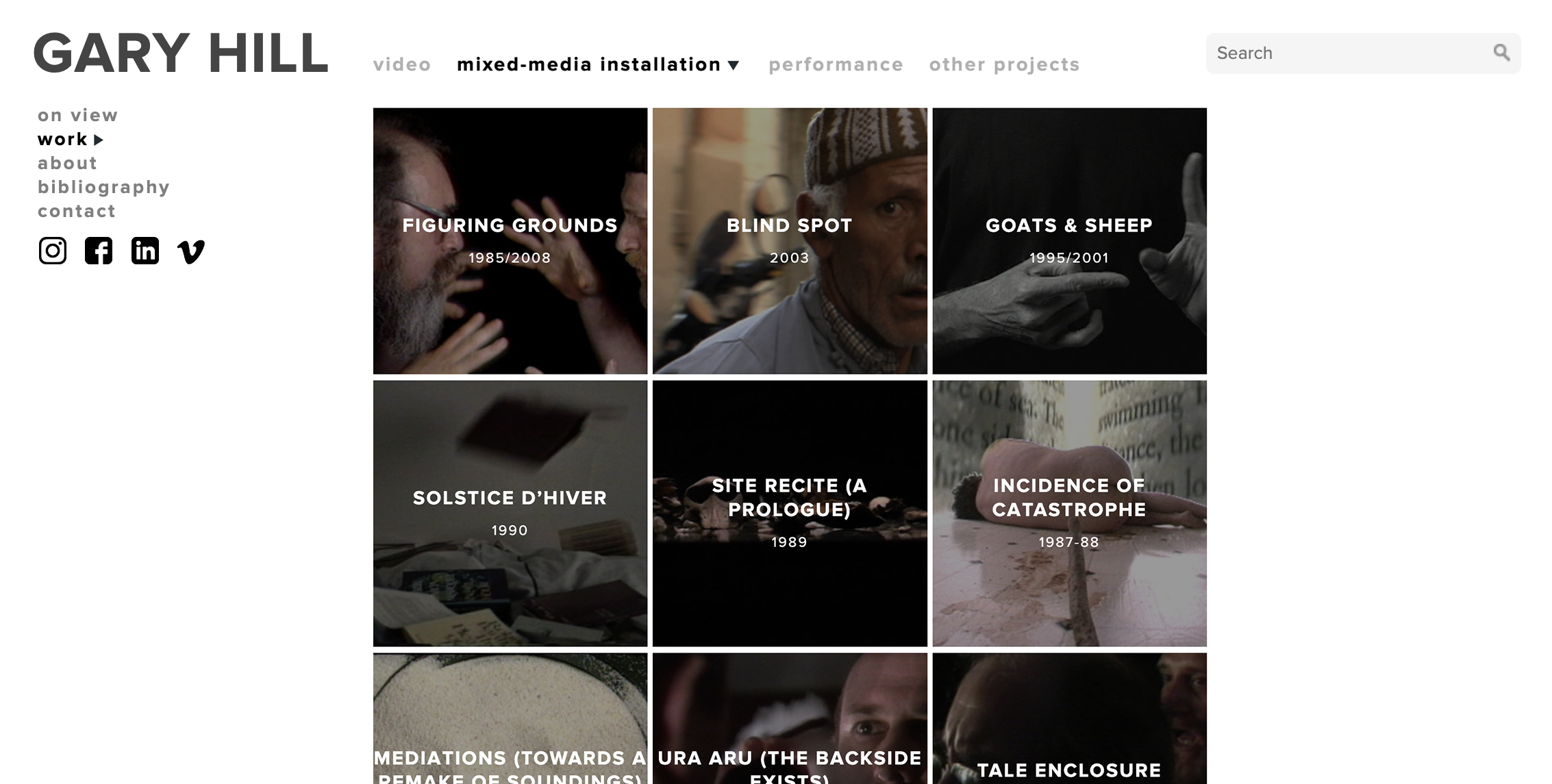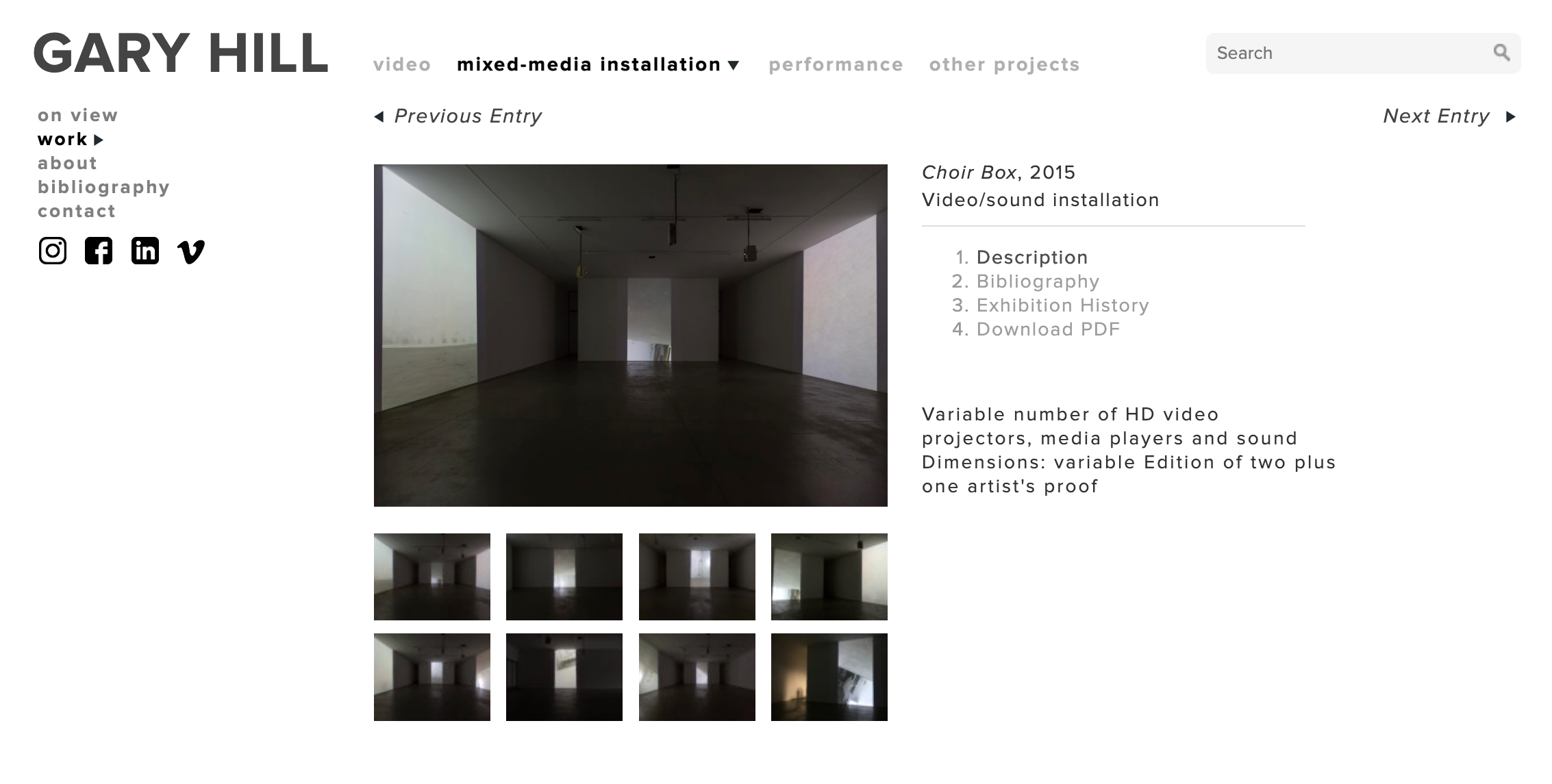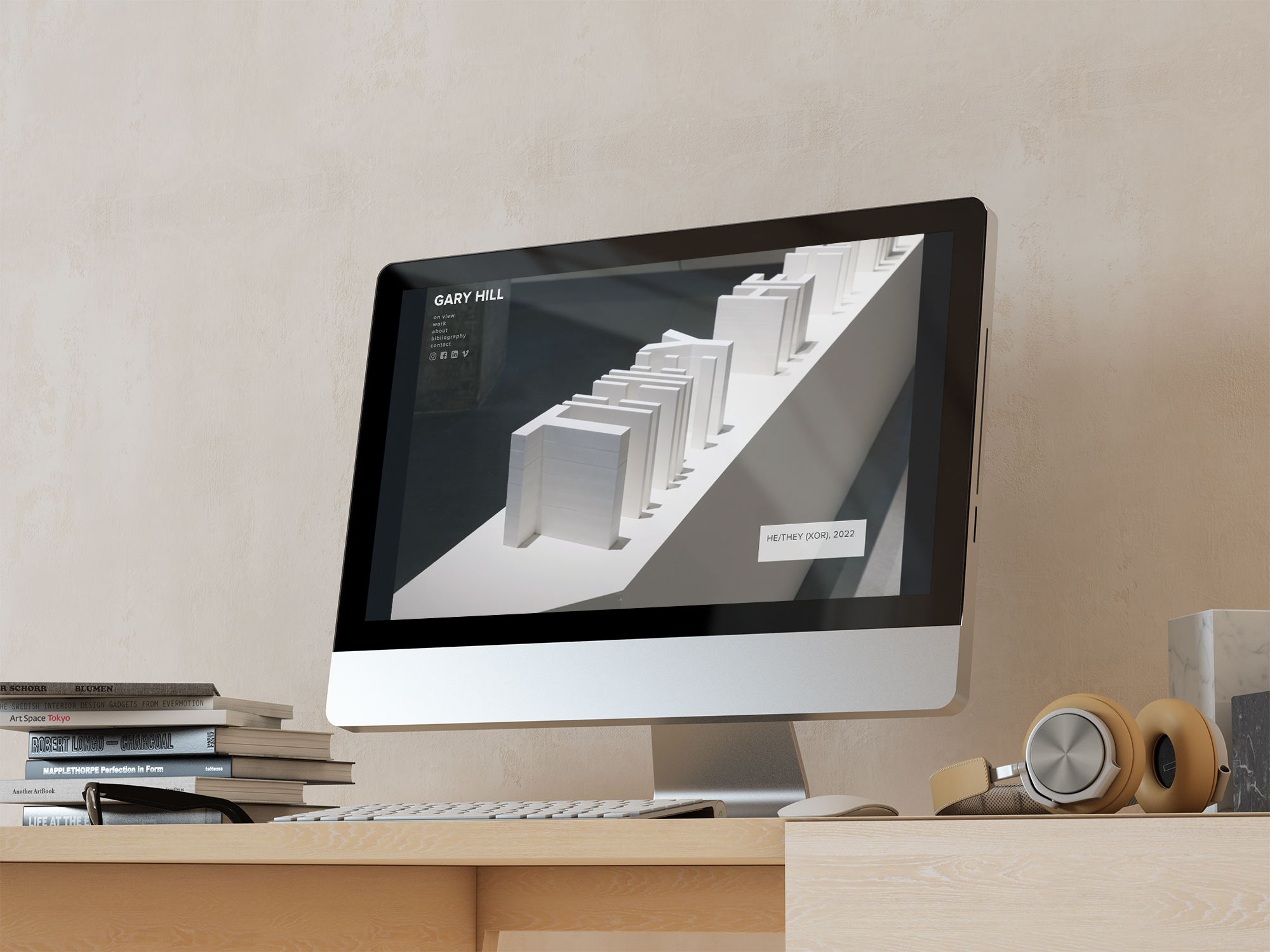The Challenge
Gary Hill is a foundational time-based media artist with a 30+ year body of work—and no website. He needed a digital presence to serve curators, researchers, museum staff, and students who frequently reached out to his studio with requests.
I was hired to translate decades of media-rich, technically complex artwork into a searchable, usable web archive that could absorb some of the studio manager's workload.
My Process
1. Community Research
I conducted interviews throughout the Seattle art community with curators, installation staff, and university students to understand what they expected from a working artist's site—and what was missing even on the best websites.
2. Content Architecture
This research led to a dense content model for each piece: video or stills, medium, description, transcript, bibliography, exhibition history, tech specs (for creation and installation), and downloadable PDFs for quick reference.
3. Technical Implementation
The site was built in WordPress with custom field structures to support cross-referencing and future updates. I prioritized both precise search and exploratory browsing, designing a navigation system that balanced categorical access with direct search.
Key Outcomes
- Reduced inbound admin requests from institutions
- Became the primary reference source used by the artist himself
- Received positive feedback from early users in academia and curatorial research


Lessons Learned
This wasn't just a portfolio site—it was a working research and exhibition tool. It balanced dense metadata, discoverability, and artist voice in one living archive.
The key was creating a UI that supported dense metadata without overwhelming the page, while ensuring the system could handle the complexity of time-based media art and serve multiple user types effectively.
